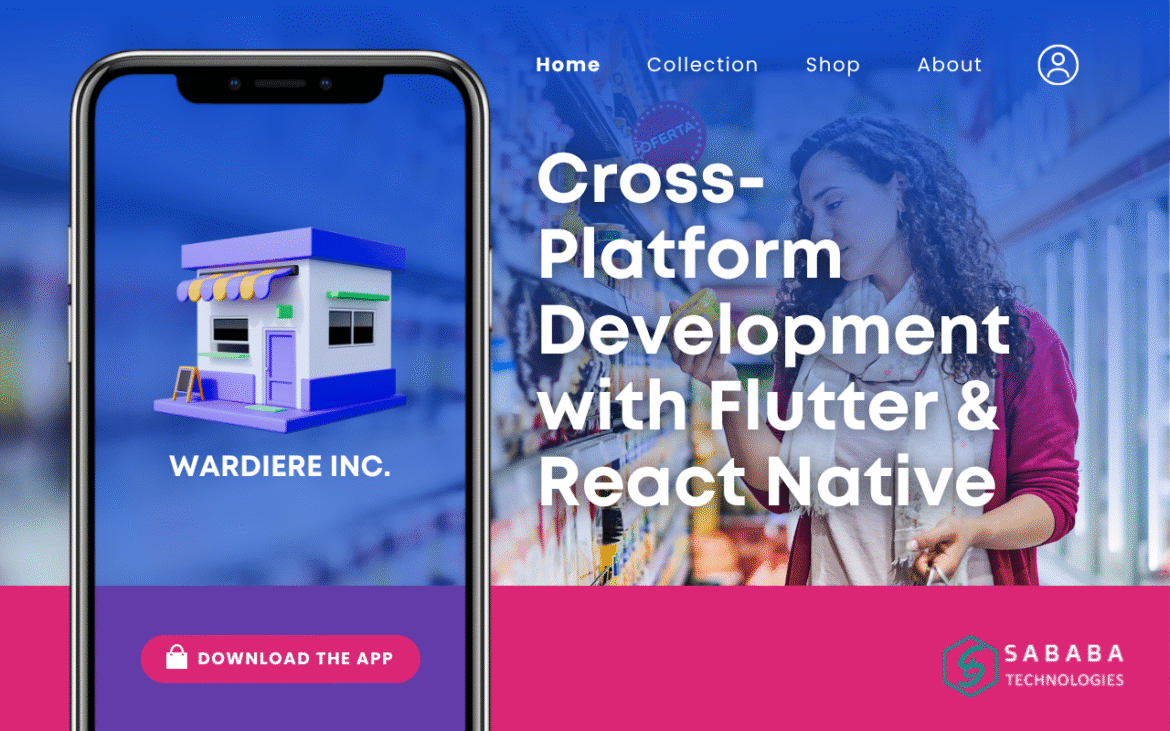Build powerful iOS and Android apps faster with cross-platform app development using Flutter and React Native from a single codebase.
The world of app development has evolved rapidly. Gone are the days when developers needed separate teams for iOS and Android. Thanks to cross-platform app development, building apps that work seamlessly across both ecosystems is now faster and more cost-effective.
Two frameworks lead this transformation — Flutter and React Native. Both are powerful, flexible, and have massive developer communities. But which one suits your project better? And how do they streamline the development process? This guide dives deep into those answers.
What is Cross-Platform App Development?
Cross-platform app development refers to the process of building mobile apps that run on multiple operating systems using a single codebase. Rather than maintaining separate code for Android and iOS, developers use one programming language and framework to deliver a consistent experience everywhere.
This approach not only accelerates development but also reduces maintenance costs and ensures design uniformity.
Why Choose Cross-Platform Development?
The demand for faster releases and lower budgets makes cross-platform app development a logical choice for startups and enterprises alike.
Here are some compelling reasons why tech leads and app developers prefer it:
- Single Codebase: Write once, deploy everywhere.
- Reduced Cost: Fewer developers, faster iterations.
- Consistent UI: Uniform design across devices.
- Easy Maintenance: Updates roll out to all platforms simultaneously.
- Faster Time-to-Market: Accelerated development cycles save months of work.
Flutter: Google’s Take on Cross-Platform Excellence
Flutter, built by Google, has quickly become a favorite among developers. It uses the Dart programming language and focuses on delivering visually rich applications with native-like performance.
Advantages of Using Flutter
- High Performance: Compiles directly to native code, ensuring smooth animations.
- Hot Reload: Developers can see code changes instantly without restarting the app.
- Customizable Widgets: Flutter offers pre-built and customizable widgets for every design system.
- Single UI Logic: Ensures design consistency across iOS and Android.
Flutter is particularly ideal for projects that need fluid visuals, advanced animations, or custom designs that stand out.
React Native: Facebook’s JavaScript Powerhouse
React Native, maintained by Meta (Facebook), allows developers to create apps using JavaScript and React. It’s widely appreciated for its simplicity and active open-source community.
Why Choose React Native
- Familiar Language: Developers can use JavaScript or TypeScript.
- Reusable Components: Enables faster app builds through pre-built components.
- Strong Ecosystem: Backed by thousands of libraries and plugins.
- Native Modules: Easily integrate native iOS and Android code where necessary.
For teams with a JavaScript background, React Native can drastically reduce the learning curve and speed up production.
Flutter vs React Native: Feature Comparison
| Feature | Flutter | React Native |
| Language | Dart | JavaScript |
| Performance | High, near-native | Moderate, depends on bridge |
| UI Components | Built-in widgets | Relies on third-party components |
| Community Support | Growing rapidly | Mature and large |
| Hot Reload | Yes | Yes |
| Learning Curve | Moderate | Easy for JS developers |
Choosing between them depends on your project’s goals, team expertise, and performance needs.
Best Practices for Cross-Platform App Development
Regardless of the framework, certain principles ensure success in cross-platform app development:
- Plan Before You Code: Define core features and platform requirements early.
- Design for Both Platforms: Respect native UX patterns for Android and iOS.
- Use Modular Architecture: Keep your code organized and scalable.
- Test on Real Devices: Emulators aren’t enough—test across hardware.
- Optimize Performance: Minimize unnecessary re-renders and memory leaks.
Following these best practices ensures your app performs like a native product, even with a shared codebase.
Challenges in Cross-Platform App Development
While it offers major advantages, cross-platform app development also comes with hurdles:
- Limited Access to Native APIs: Some platform-specific features may need custom bridges.
- Performance Tweaks: Heavy animations might lag if not optimized.
- Platform Updates: iOS and Android updates can affect stability.
- App Size: Cross-platform apps can sometimes be slightly larger than native ones.
A good developer anticipates these challenges early and plans solutions accordingly.
How to Choose Between Flutter and React Native
When deciding between Flutter and React Native, consider the following:
- Project Type: Flutter suits design-heavy apps; React Native works great for MVPs or web-connected tools.
- Team Skills: Use Flutter if your team is new to mobile; React Native if they’re strong in JavaScript.
- Performance Needs: Flutter often offers smoother UI rendering.
- Community Support: React Native has more mature libraries and packages.
Ultimately, the best choice aligns with your project’s scope, goals, and technical comfort.
The Future of Cross-Platform App Development
Cross-platform technologies continue to evolve. Flutter is expanding into web and desktop, while React Native is improving its architecture to enhance performance. The convergence of AI tools, cloud backends, and low-code platforms will make cross-platform app development even more powerful and accessible in the coming years.
Both Flutter and React Native have reshaped how modern apps are built. They offer scalability, flexibility, and efficiency that native frameworks often can’t match. By leveraging cross-platform app development, businesses can deliver quality user experiences without doubling effort.
The key is not choosing the “best” framework but selecting the one that aligns with your product’s goals, your team’s expertise, and your timeline. With the right strategy, cross-platform apps can deliver performance, aesthetics, and functionality that rival any native solution.
FAQs
1. What is the biggest benefit of cross-platform app development?
It allows developers to use a single codebase for both iOS and Android, reducing time and cost without compromising user experience.
2. Is Flutter better than React Native for performance?
In most cases, Flutter offers smoother performance since it compiles directly to native code, eliminating the JavaScript bridge React Native relies on.
3. Can I use native code in cross-platform apps?
Yes. Both frameworks allow integrating native code for specific features or optimizations when needed.
4. Which framework is more beginner-friendly?
React Native is generally easier for teams familiar with JavaScript, while Flutter’s Dart language might take some time to learn.
5. How do I choose the right framework for my project?
Evaluate your team’s expertise, the app’s performance needs, and your UI complexity before choosing between Flutter and React Native.
Feeling more like puzzles than solutions? That’s when Sababa steps in.
At Sababa Technologies, we’re not just consultants, we’re your tech-savvy sidekicks. Whether you’re wrestling with CRM chaos, dreaming of seamless automations, or just need a friendly expert to point you in the right direction… we’ve got your back.
Let’s turn your moments into “Aha, that’s genius!”
Chat with our team or shoot us a note at support@sababatechnologies.com. No robots, no jargon, No sales pitches —just real humans, smart solutions and high-fives.
P.S. First coffee’s on us if you mention this blog post!


